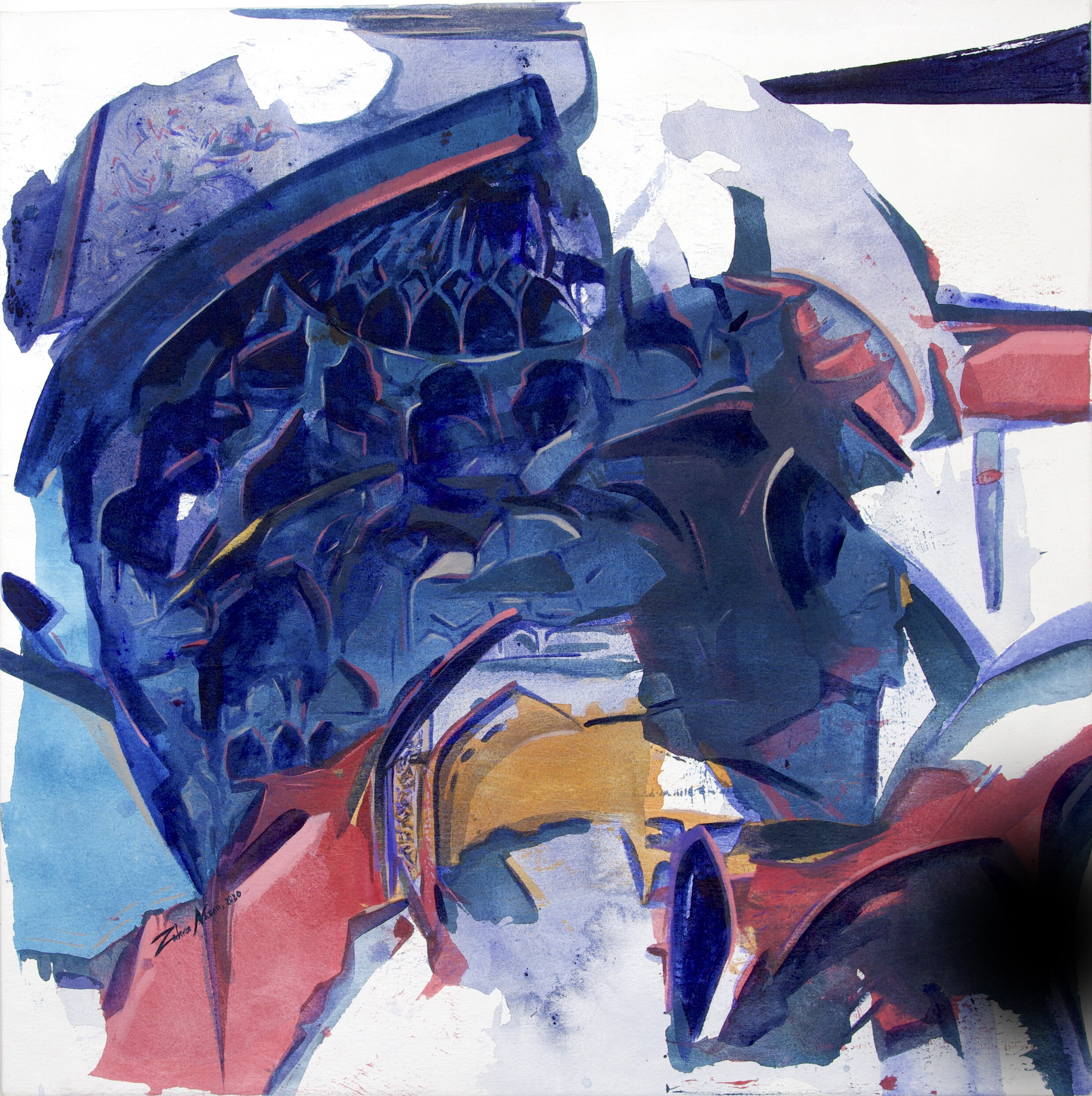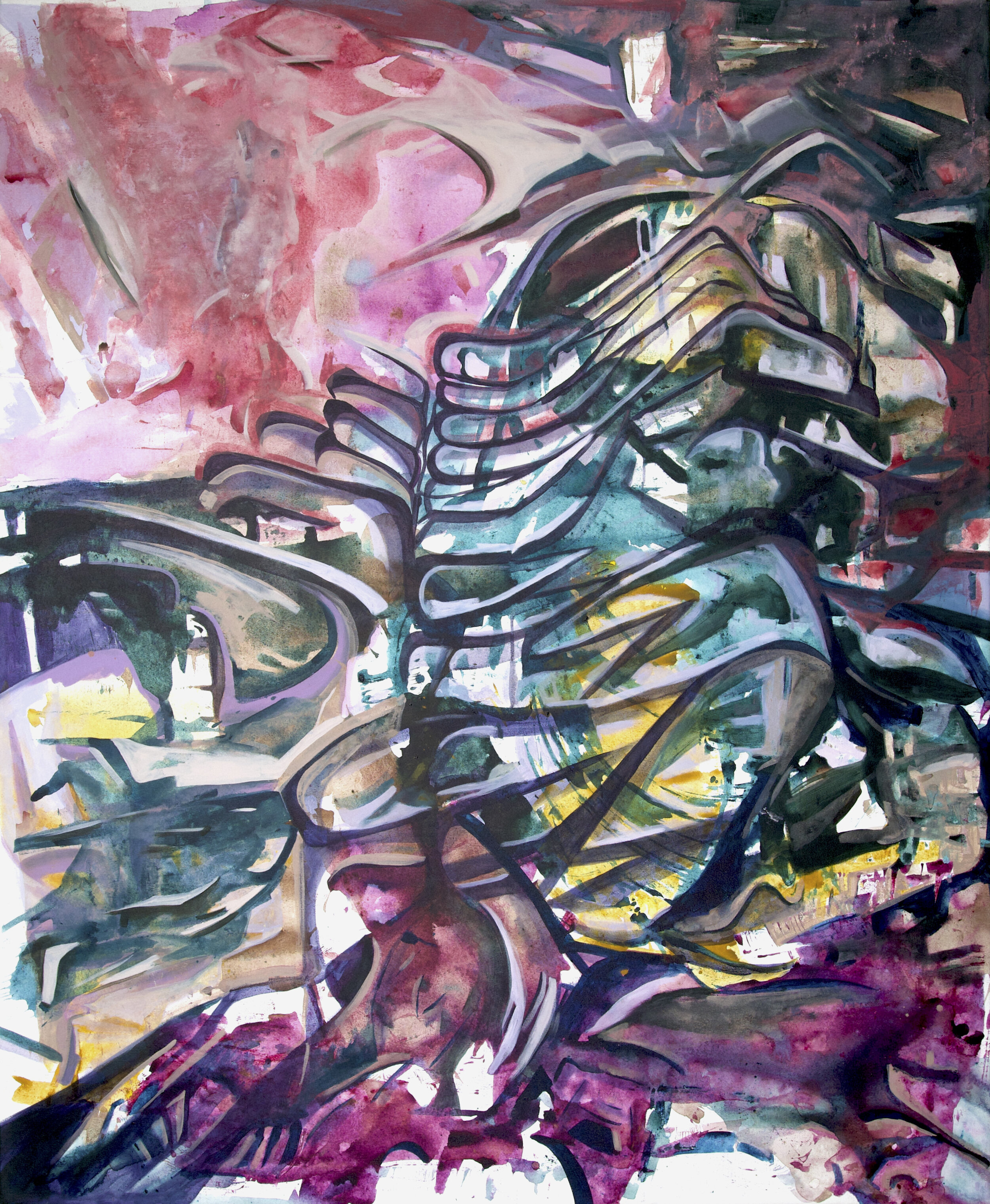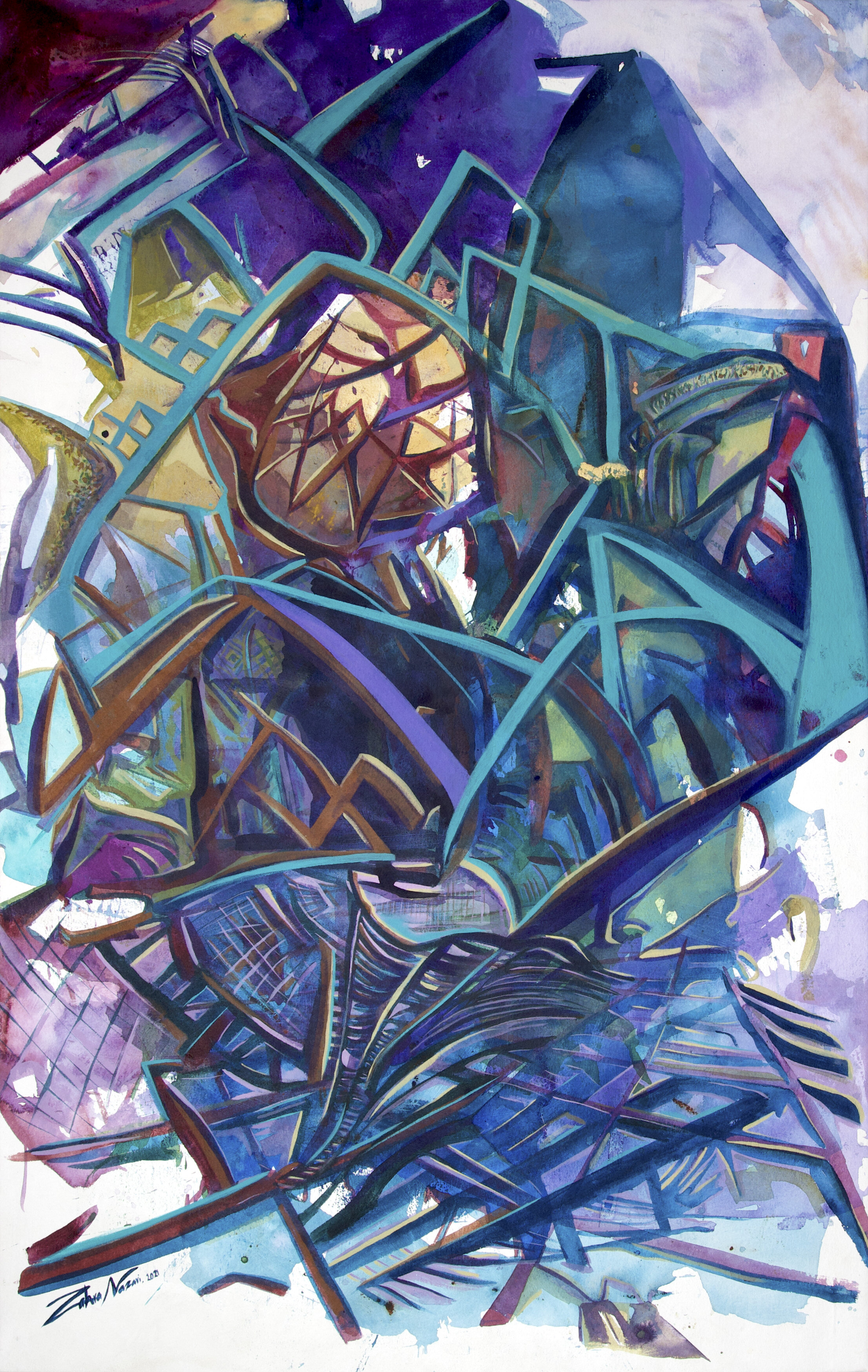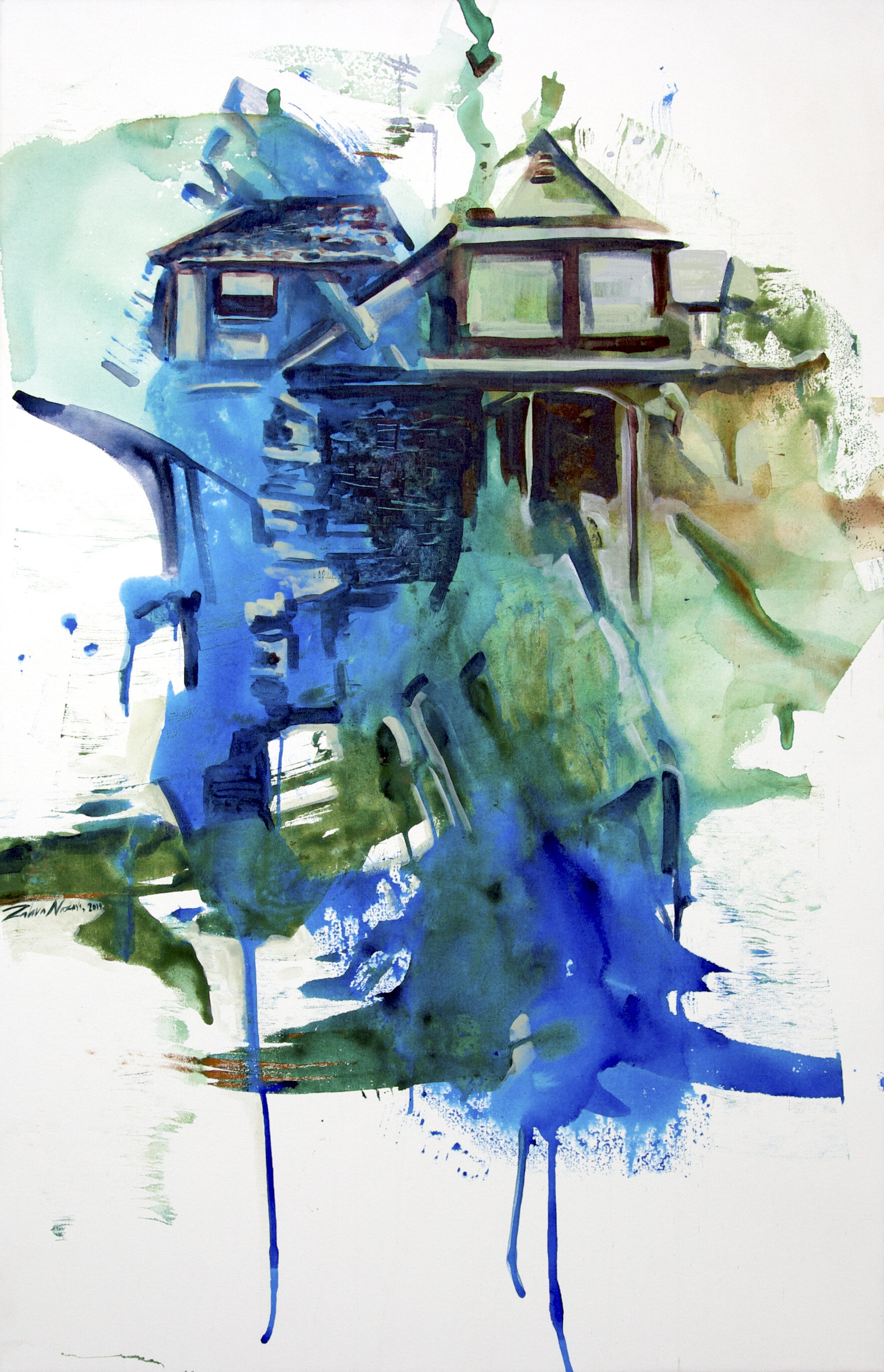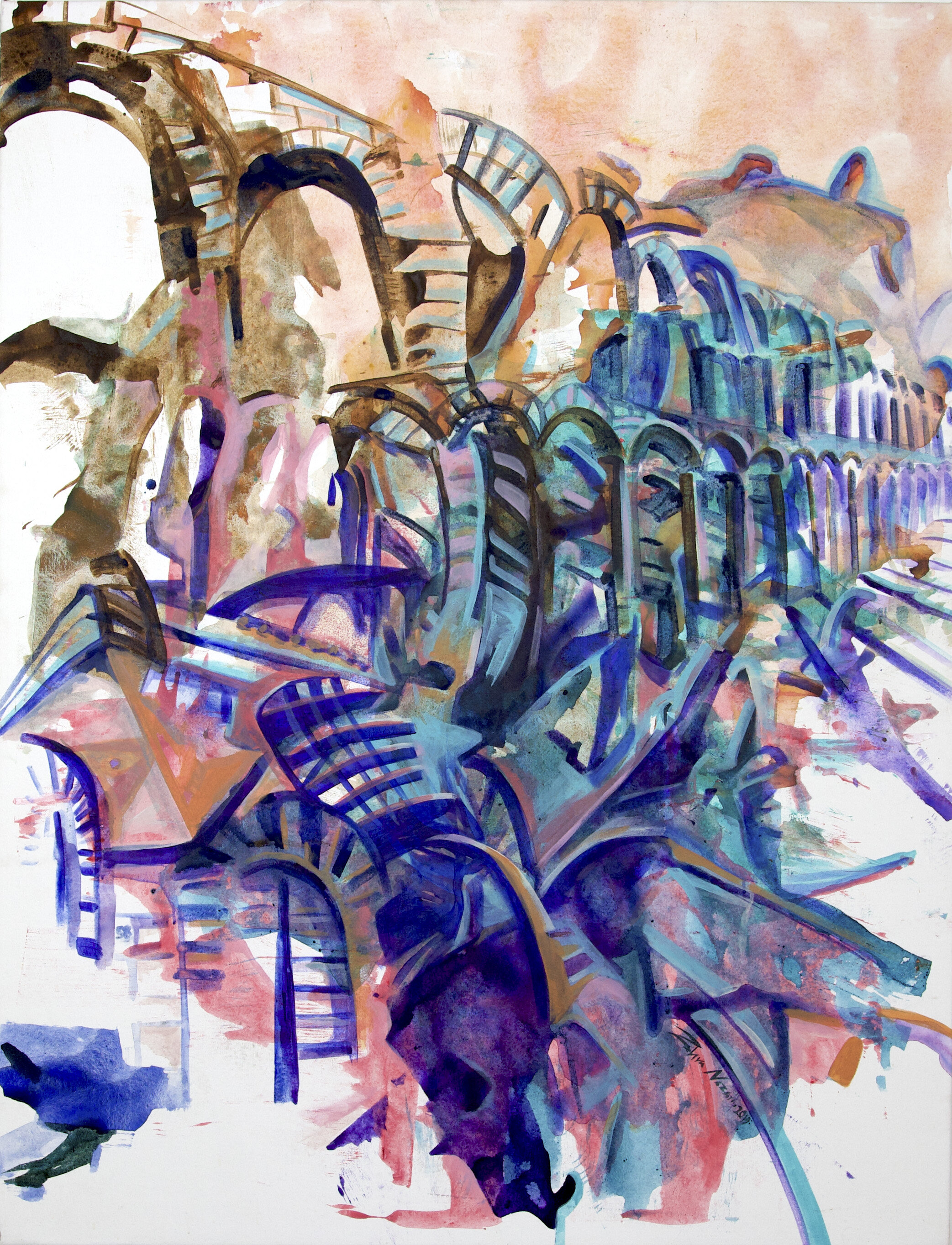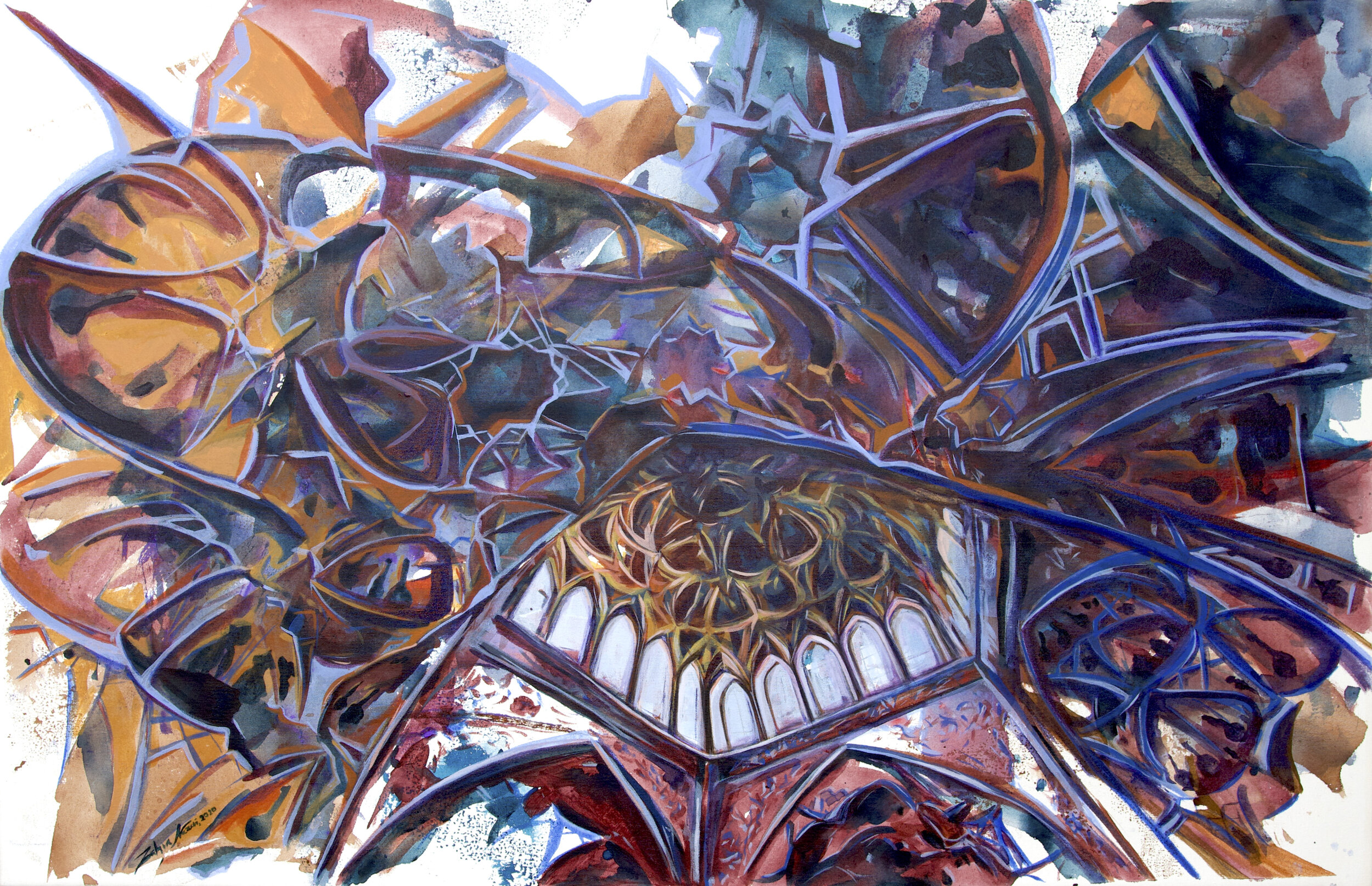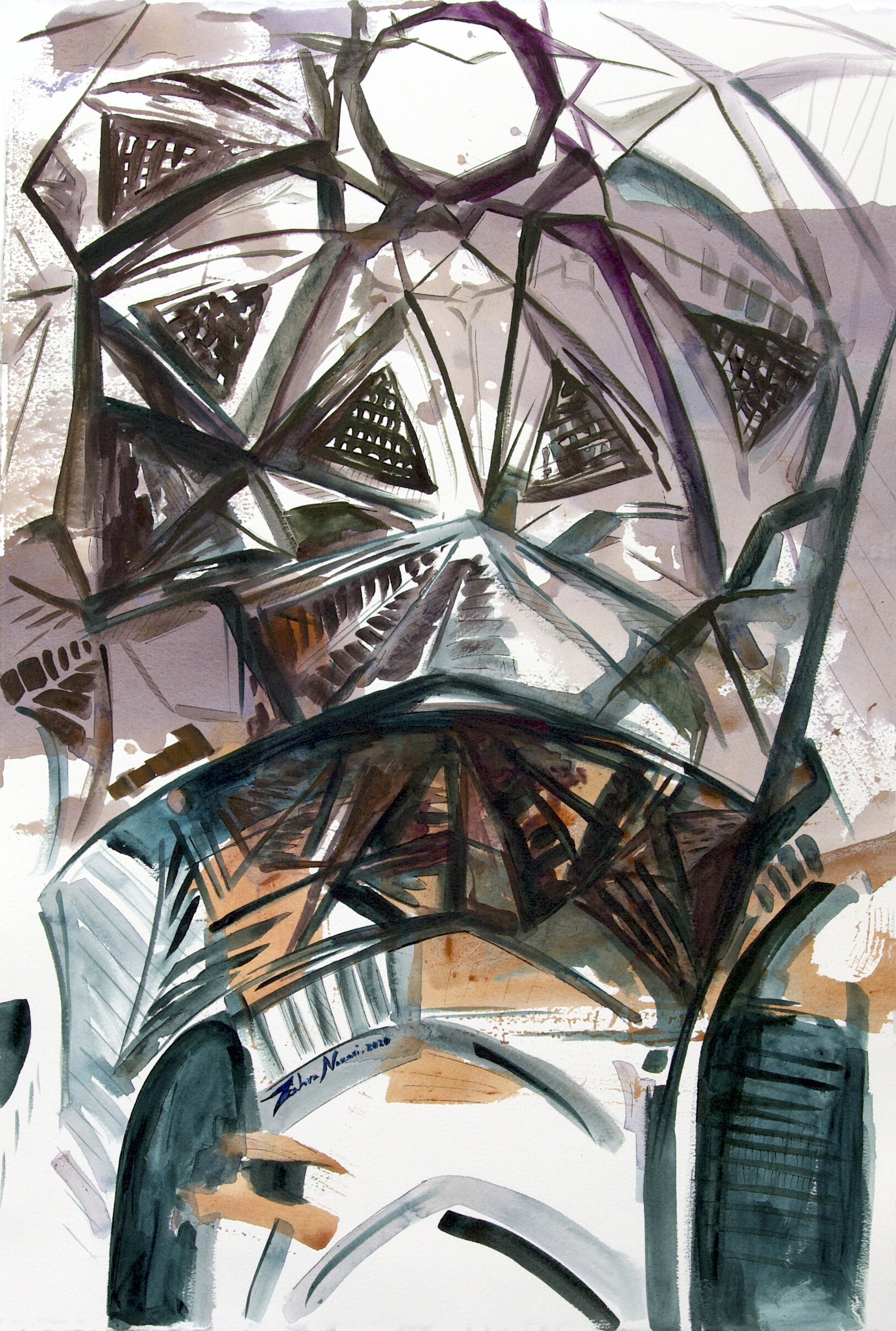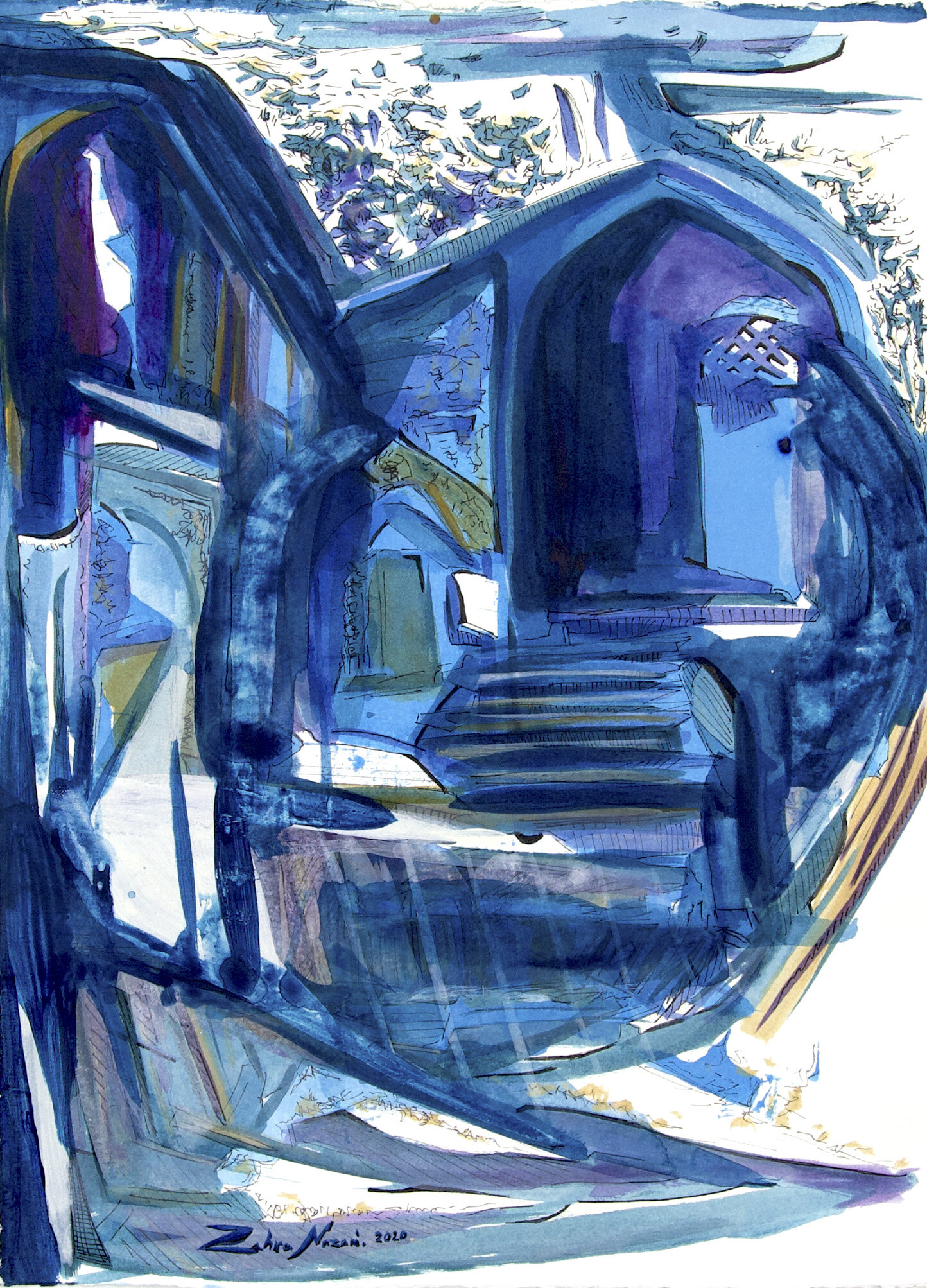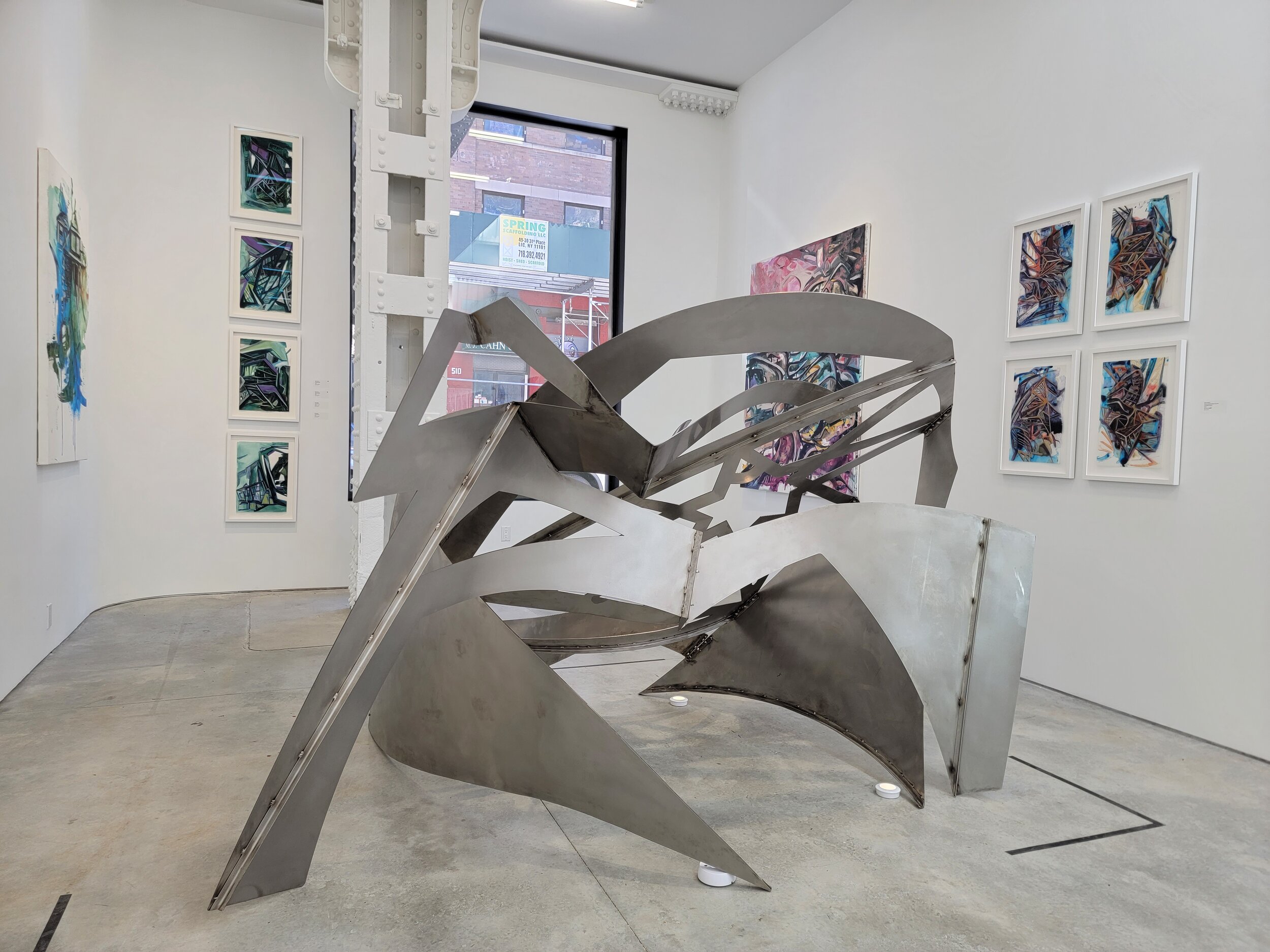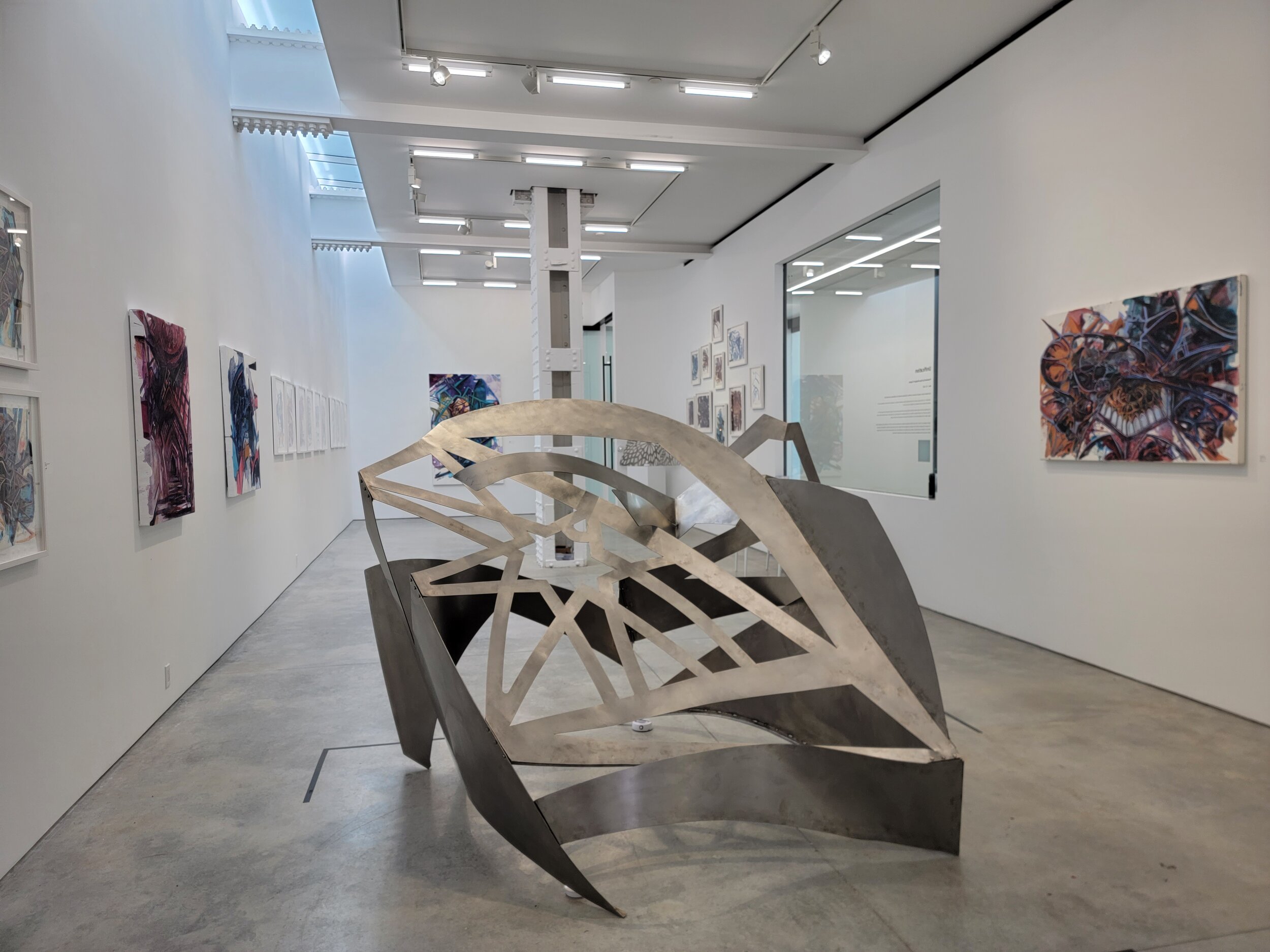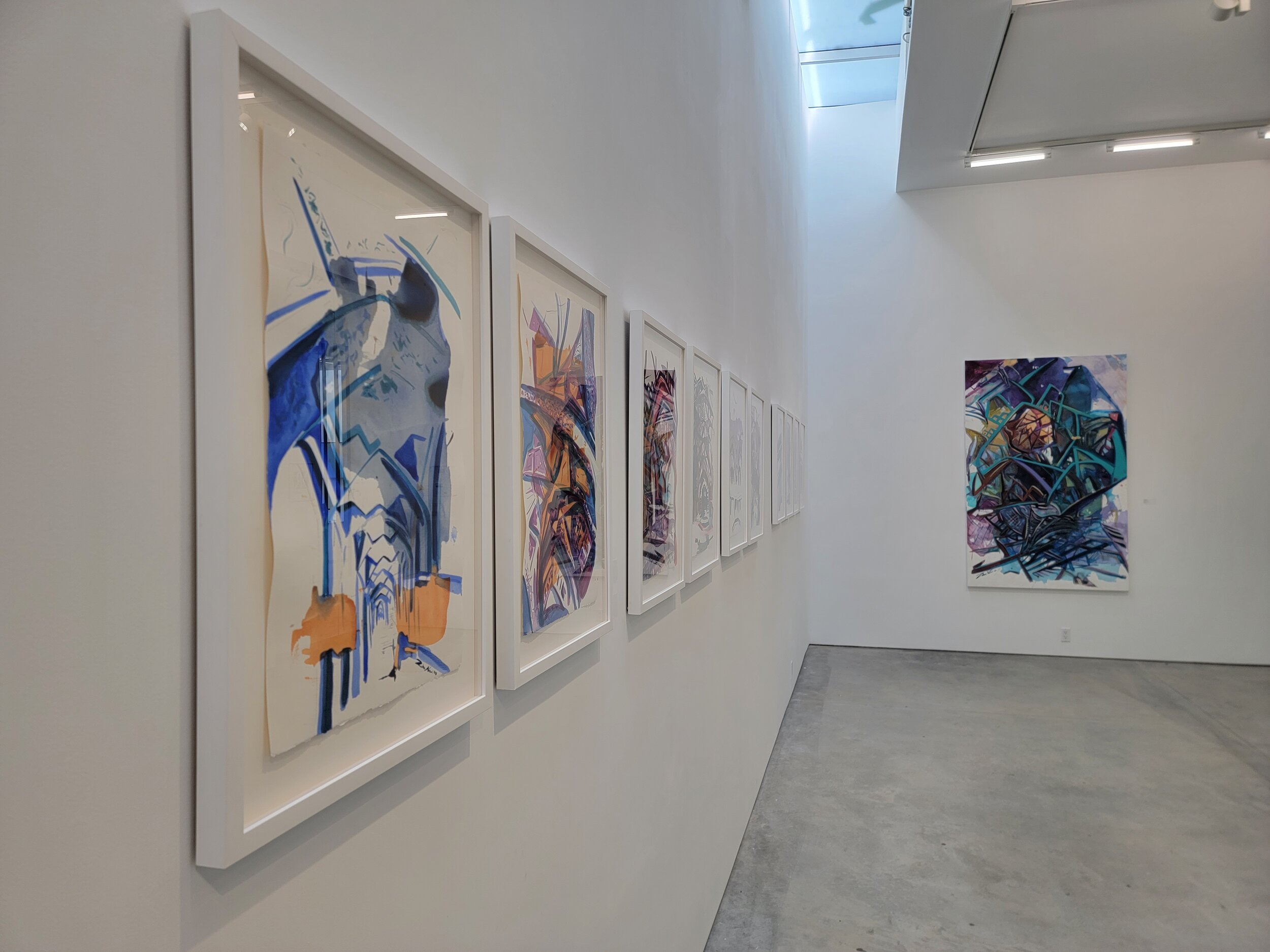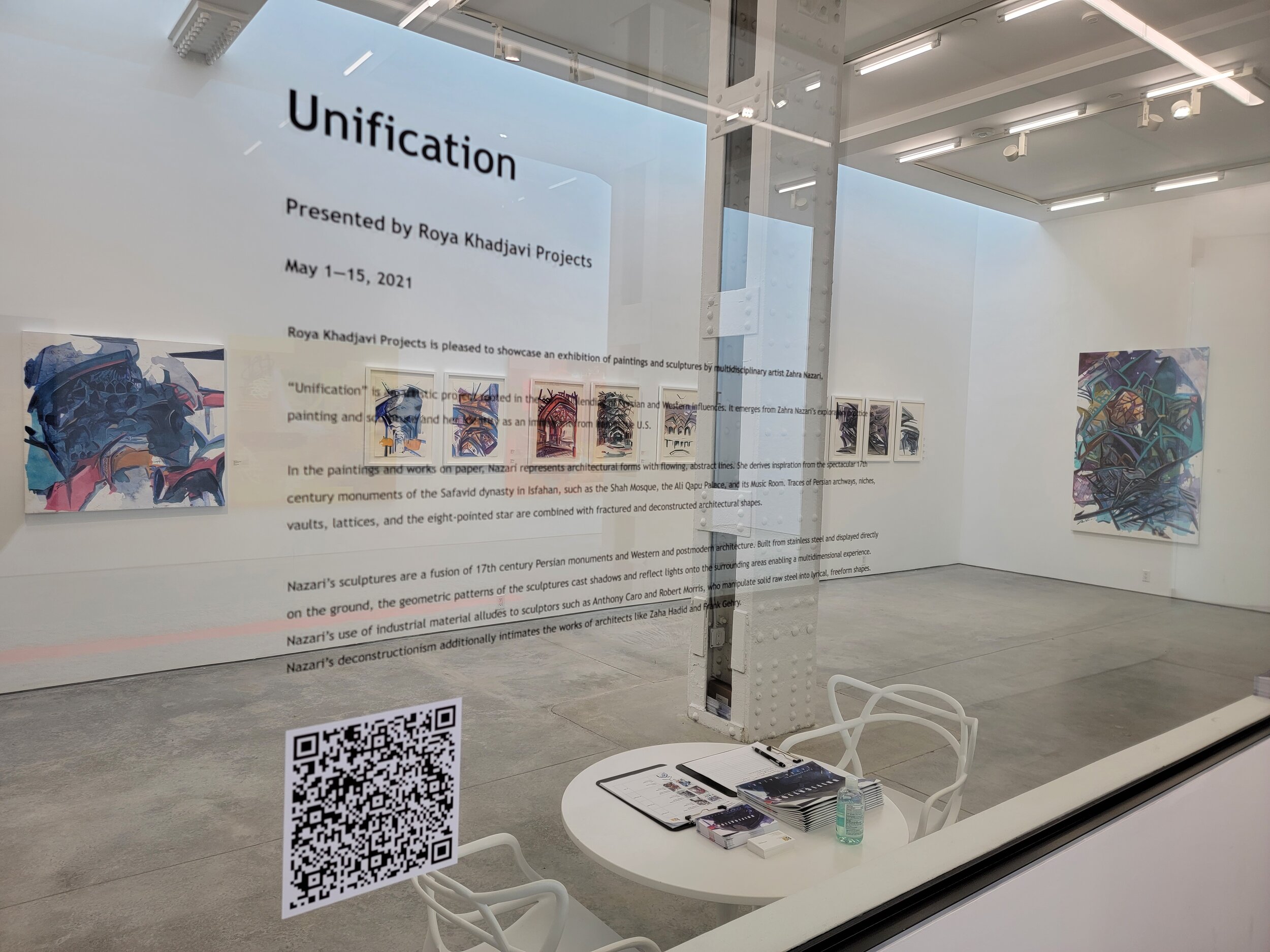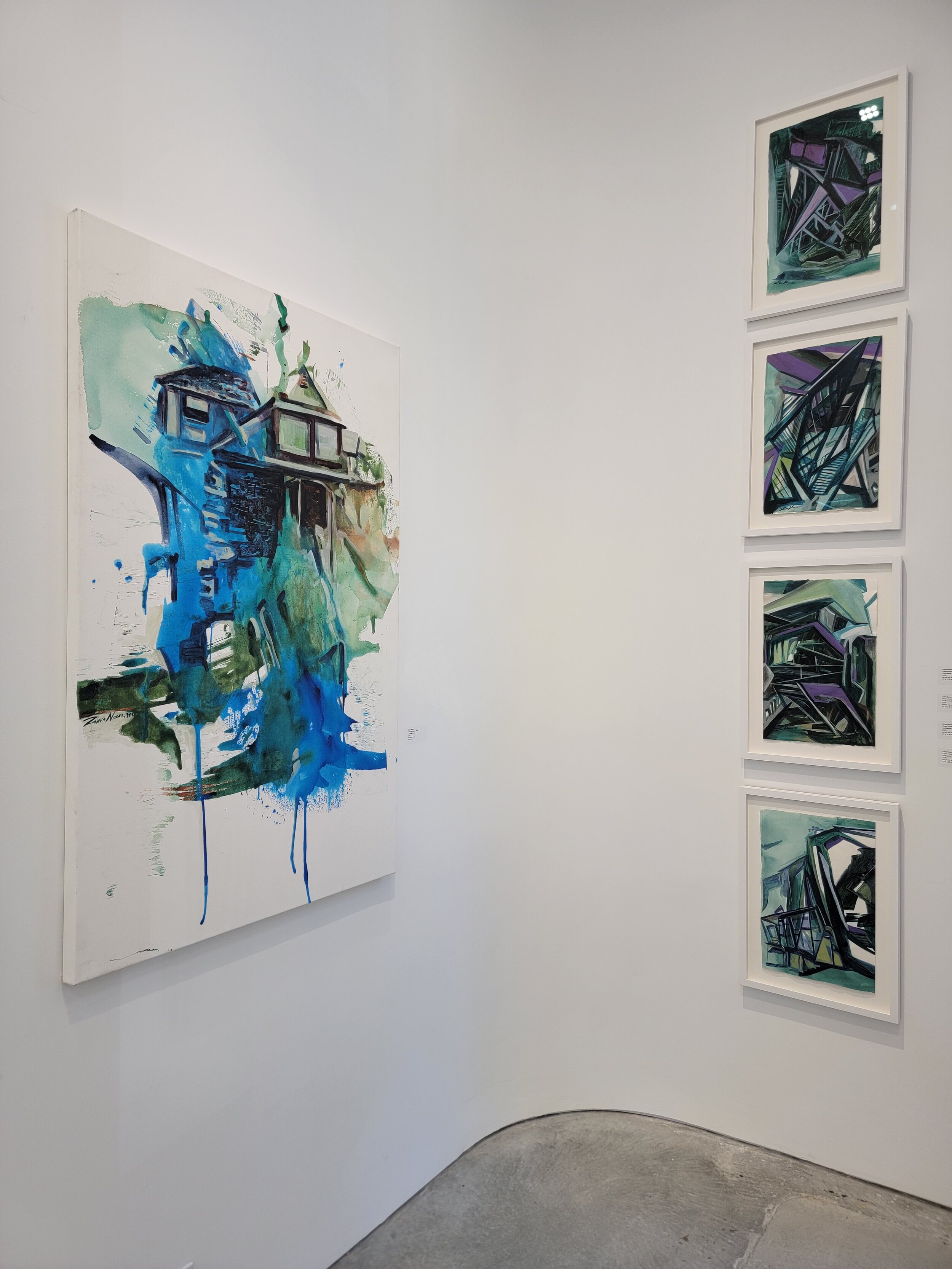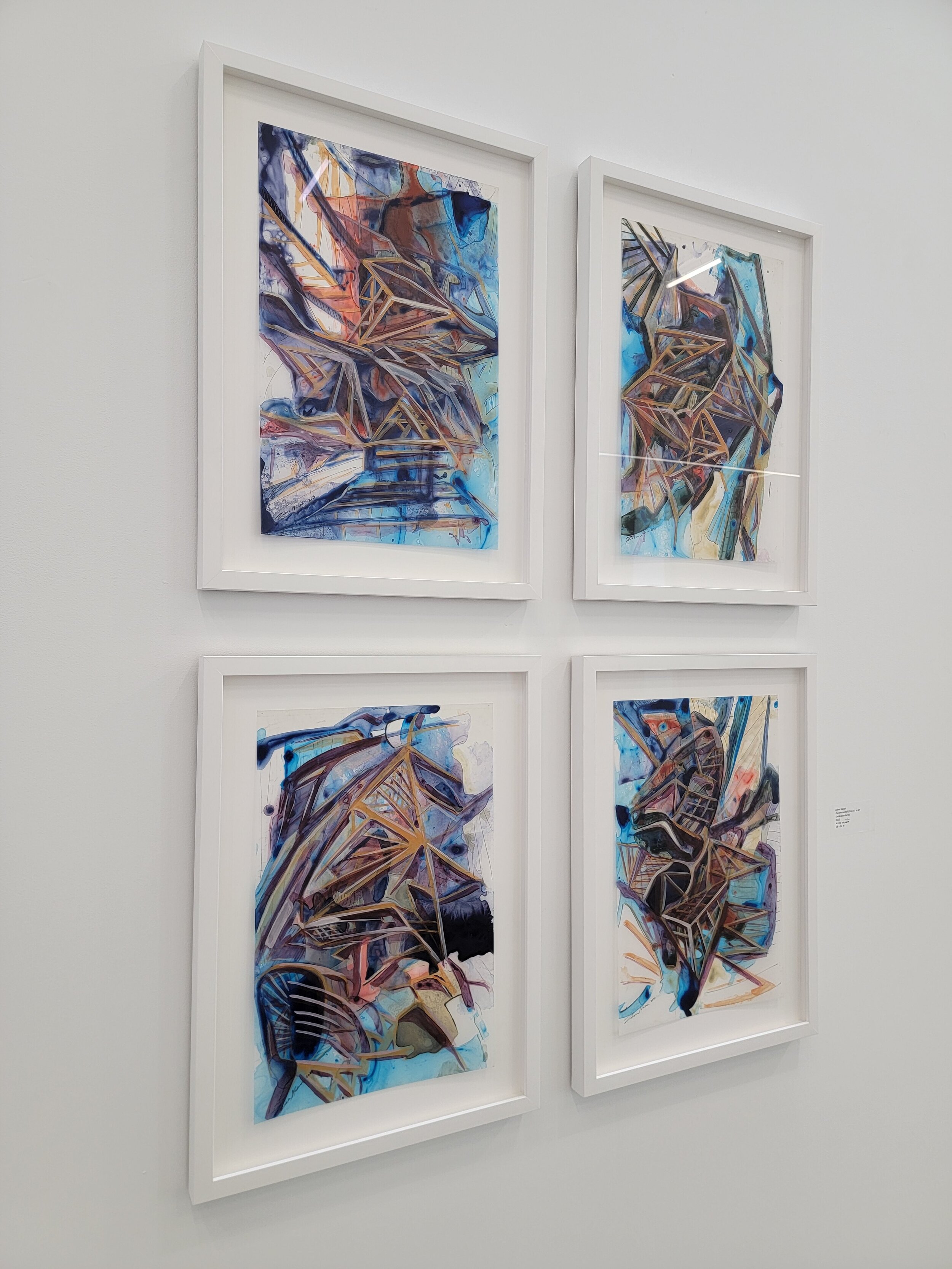Unification
Unification is an artistic project rooted in the formal blending of Persian and Western influences. It emerges from Zahra Nazari’s exploratory practice in painting and sculpture and her identity as an immigrant from Iran in the U.S.
In the paintings and works on paper, Nazari represents architectural forms with flowing, abstract lines. She derives inspiration from the spectacular 17th century monuments of the Safavid dynasty in Isfahan, such as the Shah Mosque, the Ali Qapu Palace, and its Music Room. Traces of Persian archways, niches, vaults, lattices, and the eight-pointed star are combined with fractured and deconstructed architectural shapes.
Nazari’s sculptures are a fusion of 17th century Persian monuments and Western and postmodern architecture. Built from stainless steel and displayed directly on the ground, the geometric patterns of the sculptures cast shadows and reflect lights onto the surrounding areas enabling a multidimensional experience. Nazari’s use of industrial material alludes to sculptors such as Anthony Caro and Robert Morris, who manipulate solid raw steel into lyrical, freeform shapes. Nazari’s deconstructionism additionally intimates the works of architects like Zaha Hadid and Frank Gehry.
The exhibition is accompanied by a 30 page catalogue with an essay by Gregory Volk. Gregory Volk is a New York-based art writer, freelance curator, and a former associate professor at Virginia Commonwealth University. He writes regularly for Hyperallergic and Art in America, where is also contributing editor, and his articles and reviews have also appeared in many other publications. His book-length essay on German artist Katharina Grosse appears in the monograph Katharina Grosse, published in September 2021 by Lund Humphries as part of their Contemporary Painters Series. Among his contributions to exhibition catalogues and books are essays on Joan Jonas (Museu d’Art Contemporani de Barcelona, 2007); Vito Acconci, in Vito Acconci: Diary of a Body, 1969-1973 (Charta, 2007); Turkish artist Ayse Erkmen (Venice Biennale, 2011), and Icelandic artist Ragna Róbertsdóttir, in Ragna Róbertsdóttir Works 1984-2017 (Distanz Verlag, Berlin, 2018).
Sponsored by: LMCC, New York City Department of Cultural Affairs (DCLA) and Sculpture Space in Utica
About the artist
Zahra Nazari (b.1985 in Hamedan, Iran) is a New York based painter, sculptor, and installation artist working with architectural themes.
Nazari has exhibited both nationally and internationally in galleries and museums including: the Bronx Museum, NY; Samuel Dorsky Museum of Art, NY; MANA Contemporary, NJ; Spartanburg Art Museum, SC; Masur Museum of Art, LA; New York Academy of Art, NY; Denise Bibro Fine Art, NY; Boccara Art Gallery, NY; Painting Center, NY; A Center for Contemporary Art, NJ; Illinois Institute of Art, IL; Manifest Gallery, IL; Woman Made Gallery, IL; China Millennium Monument, Beijing, China; Xuancheng Museum, Anhui, China; Lite-Haus Galerie, Berlin, Germany; Saba Institution, and Baran Gallery in Tehran, Iran.
She has been the recipient of many awards including: the AIM Fellowship from the Bronx Museum, NY; the Creative Engagement Grant from the Lower Manhattan Cultural Council, NY; the Mentoring Program from New York Foundation for the Arts, NY (NYFA); a Visiting Artist Fellowship from MASS MoCA; an Artist Residency Fellowship from Cooper Union; an Artist Residency from Sculpture Space in Utica, NY, and an Artist Residency from the Vermont Studio Center, VT.
She has given artist talks and participated as a panelist at institutions such as NYU, Columbia University, Cooper Union, and Pratt Institute in New York City. She has been interviewed by Hamptons Art Hub, Hyperallergic, Whitehot Magazine, ZH Magazine, and more. Her works are included in private and public collections in the US, Canada, and Asia.
Artist: Zahra Nazari


